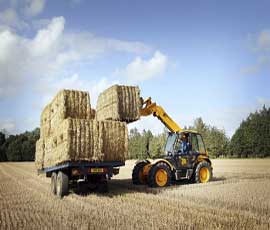Straw exports leave British farmers short

British livestock farmers could lose out as thousands of straw bales are exported to meet a shortage in France.
Dry weather that stunted French cereal crops has left farmers across the English Channel desperate to secure enough straw for the coming winter.
UK straw merchant Philip Judge said he was shipping up to 1,500t of straw every week to France from farms in the UK and Holland.
French livestock producers had each been given a €1,000 subsidy to help offset the impact of rising feed costs following dry weather, he said.
“It is quite phenomenal that an English hay and straw company is effectively working for the French government to help livestock farmers in France.”
Mr Judge added: “We are exporting more straw to France this year than we have done in any year for the past decade.”
Straw was already becoming scarce in East Anglia, he said.
Demand from straw-fuelled power stations in the UK also threatened to leave British livestock farmers short of bedding this winter.
In total, it was likely that more than 20,000t of wheat, barley and rape straw would be exported from the UK, said Mr Judge.
“The delivered price is £80-100/t to farms in the West Country and Wales. But we are delivering straw to Europe at the equivalent of £120/t.”
Mr Judge shrugged off the suggestion that some people might think he was talking up the market.
“I just feel that some British farmers are holding off because prices are too high, but they might miss the boat while straw is flying out of the country.”
With straw at £125/t, bedding costs would be running at more than 60p/head/day, said David Thornton, of animal feed specialists Rumenco.
At this price, beef producers could cut straw costs by keeping cattle out and maximising the nutritional potential of late season grass, he said.
“Housed cattle require about 5kg/head/day of bedding straw,” explained Mr Thornton.
“If you are able to delay bringing your stock inside for six weeks, you’ll need 210kg/head less straw this winter, saving a minimum of £21 an animal.”
It was perfectly feasible to leave youngstock or suckler cows outside for longer, particularly when it was relatively dry underfoot, said Mr Thornton.
Farmers would be financially better off with cattle outside on late-season grass, supplemented with silage and feed blocks.
“It’s much less work and half the cost of the straw you would have used inside,” Mr Thornton claimed.
• Have your say in our forum on straw quality.
